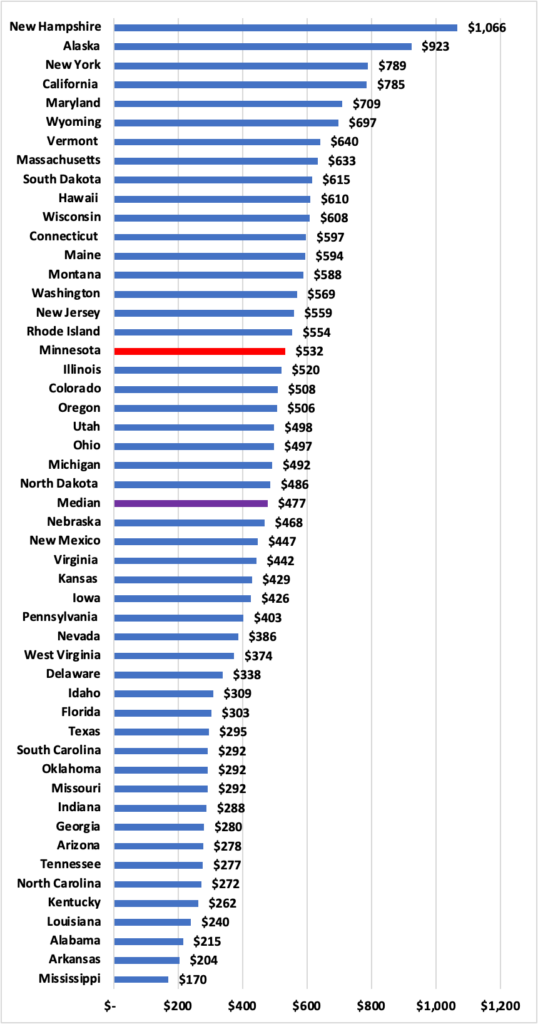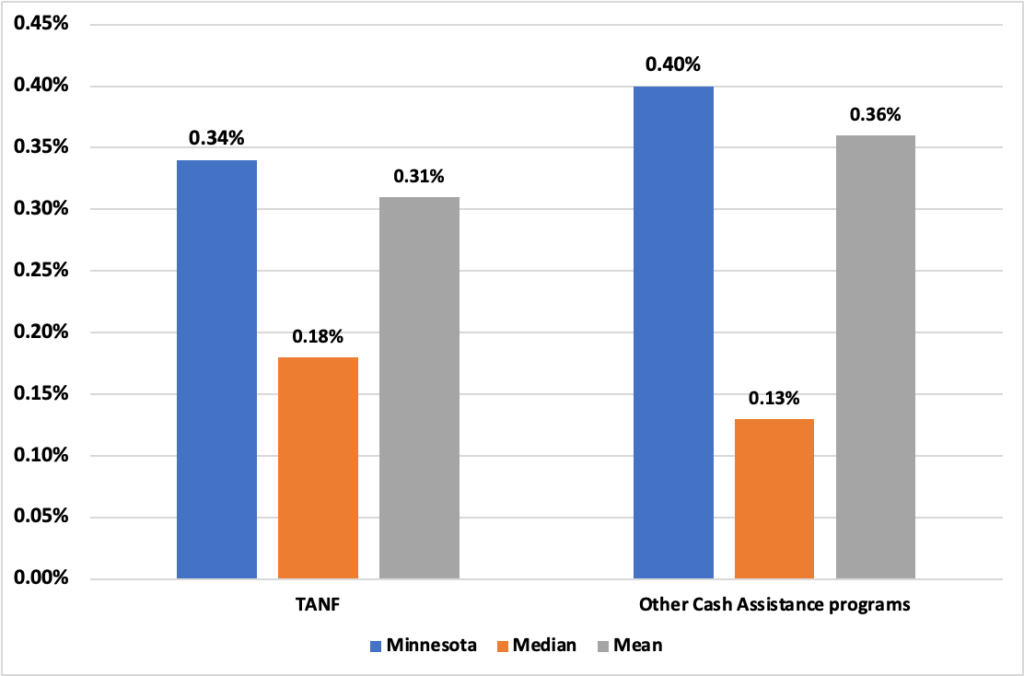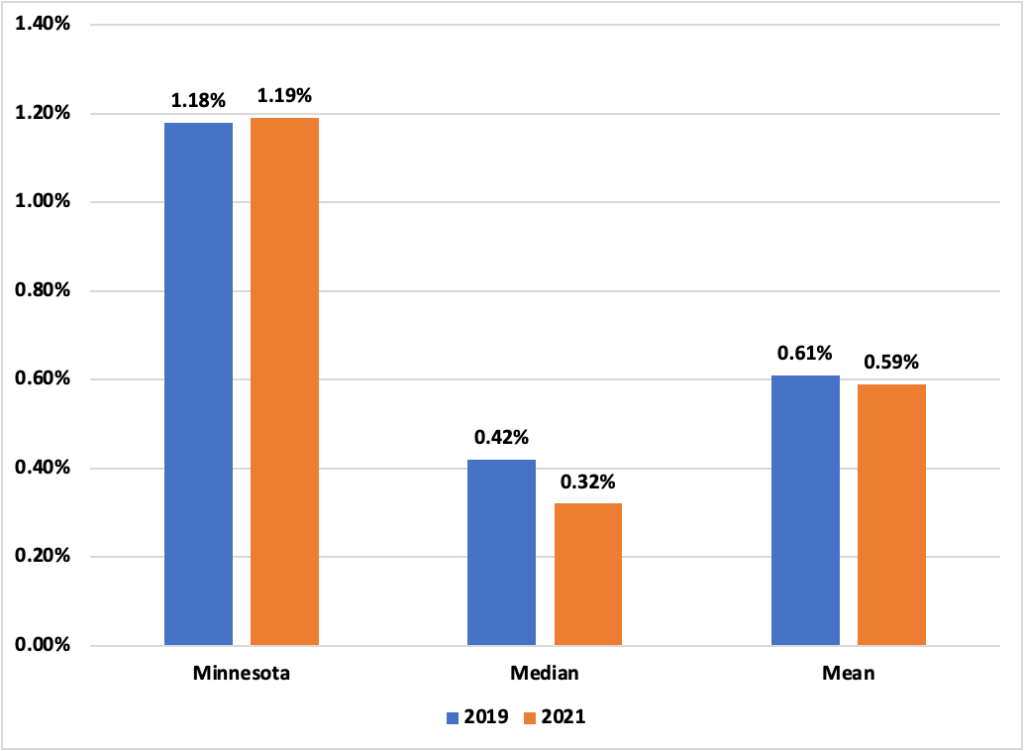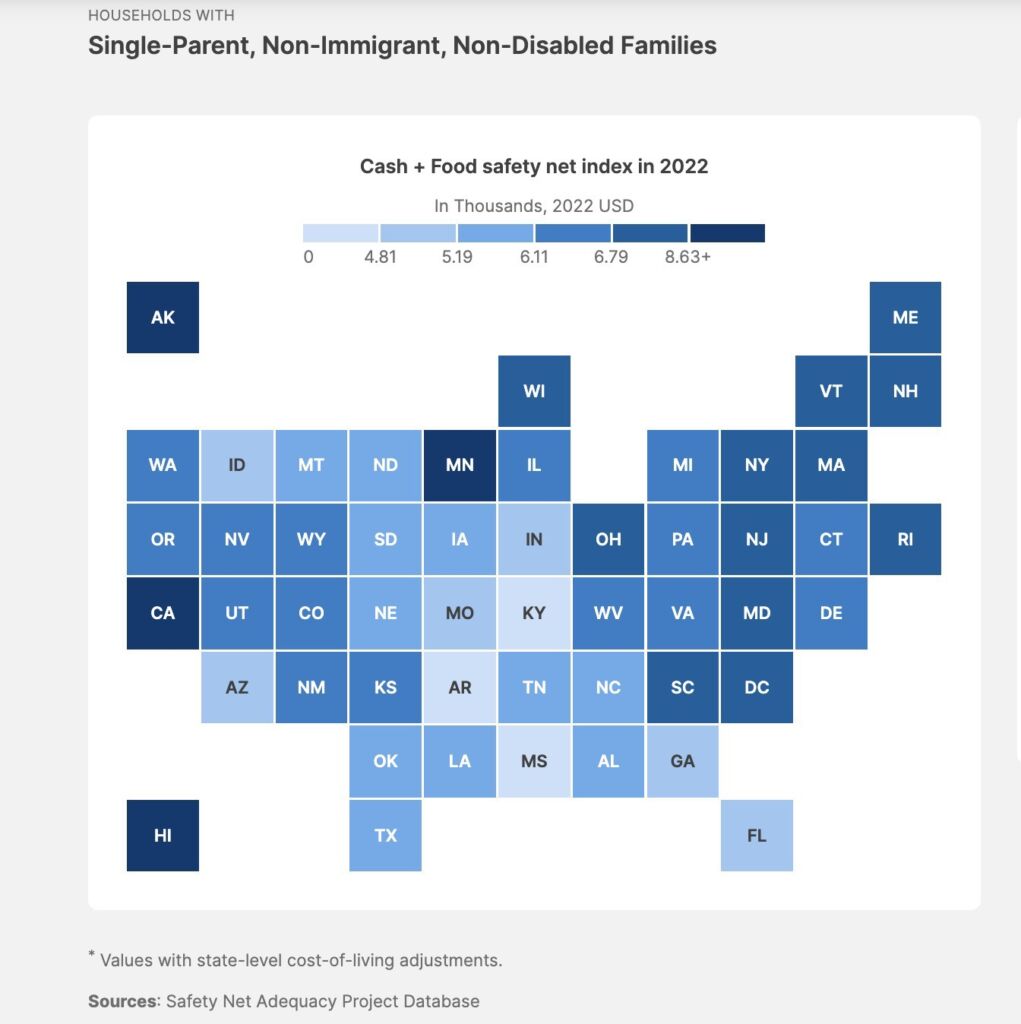Does Minnesota need a basic income program?
With over $6 billion in new funds dedicated to Health and Human Services (HHS) in the 2023 legislative session, welfare spending in Minnesota has reached record levels. As CAE’s most recent report noted, in the 2024-27 period, 42 percent of all new general fund spending in Minnesota will be dedicated to HHS, making it the primary driver of growth within the budget.
Yet despite this, it appears lawmakers are not done spending more money on welfare. Among those efforts to expand welfare this session is a proposal to create a $100 million basic income program.
While drawing inspiration from the concept of Universal Basic Income — a program whereby all citizens are guaranteed a certain income — as John Phelan explains, the proposal is anything but universal. Rather, the program will add to existing welfare programs targeting people with certain incomes.
This begs the question, does Minnesota need more welfare spending?
As CAE’s report demonstrates, Minnesota is a generous state on welfare. Not only does Minnesota spend a bigger share of its budget on welfare, but also ranks at the top on welfare spending per person in poverty. This generosity can be seen when looking at specific programs like Medicaid. New spending, therefore, would likely only add pressure to the budget without doing much to improve the welfare system.
For Minnesota and the rest of the country, however, cash assistance spending pales in comparison to spending on Medicaid, and other health insurance coverage programs such as CHIP. Additionally, changes to welfare over the years have pushed spending to in-kind benefits such as health insurance, and childcare, among others, painting the picture that the safety net is shrinking in the US.
This begs another question, does Minnesota need a basic income program?
To answer that, we need to look at Minnesota’s existing cash assistance programs and how they compare.
Cash Assistance in Minnesota
Before welfare reform in 1996, cash assistance for families with children in the US was administered under the Aid for Families with Dependent Children (AFDC). The program, which was created in 1935, provided matching funds to states that in turn were responsible for crafting their programs. States generally set income limits, and benefit amounts, among other things. Families under AFDC received cash benefits indefinitely.
After the 1996 welfare reform bill, AFDC was replaced by the Temporary Assistance for Needy Families (TANF). In Minnesota, TANF is administered under the Minnesota Family Investment Program (MFIP).
Since TANF was primarily created to encourage work and two-parent households, it differs from AFDC in many ways. For example:
- Unlike AFDC, TANF is funded by a block grant to states instead of an open-ended match from the federal government.
- TANF required states to engage participants in work activities to qualify for their full federal grant
- In addition to cash, TANF allowed states to spend money on work and family-related supports, such as childcare and education training
- TANF instituted a 5-year limit — at least for benefits that use federal funds.
In addition to MFIP, Minnesota also spends money on General Assistance (GA) and Minnesota Supplemental Assistance (MSA). GA provides cash to adults without children, and MSA provides up to $81 a month for single adults and $111 for a couple receiving Supplementary Security Income (SSI) because of age or disability.
How Minnesota compares
Because Federal TANF funds are flexible, spending levels on Cash Assistance differ significantly among states. Over the years, for example, the share of TANF money that states dedicate to cash assistance has declined, as states have diverted funds to other programs such as childcare.
However, for Minnesota, the story is different. Even after accounting for spending on other programs, Minnesota remains one of the most generous states for TANF and other cash assistance programs.
In 2019, for example,
the maximum benefit that a family of three (with one parent and no income) could receive in Minnesota under MFIP was $532.20 This was higher than both the median ($477) and average ($471) maximum monthly benefit and was the 18th highest among the 50 states. For the most recent year for which data is available, 2021, Minnesota’s maximum monthly TANF benefit (for a family of three with no income) was raised to $632, making it the 12th highest among the 50 states.
Figure 1: Maximum Monthly TANF Benefit for a Family of Three with No Income, 2019

Not only that, but
In addition to being an outlier in spending, Minnesota’s TANF income eligibility levels are also high. In 2019, the maximum monthly income that a family of three (with one parent) could earn and still be eligible for benefits was $2,231.22 This was the highest income limit in the country, and over two times higher than the median state limit of $857…In 2021, the maximum income for eligibility for the same family makeup in Minnesota was $2,413, again the highest limit in the country, by far.
Figure 2: Maximum Monthly Earnings a Family of Three Could Have and Still Be Eligible for TANF Cash Assistance

Minnesota also outpaces the rest of the country when looking at spending as a share of the budget.
Spending on cash assistance as a share of the budget
For instance,
in 2019, Minnesota spent 0.3 percent of its general funds on TANF, according to NASBO. Minnesota’s general fund spending on TANF was nearly two times the share of the budget for the Median state, and slightly above average. But this was mainly because the average was pushed up by a couple of high-spending states like New Hampshire and Massachusetts. Minnesota’s total spending on TANF as a share of all spending was also two times that of the median state and 30 percent higher than that of the average state.
For other cash assistance programs outside of TANF, like MSA and GA, a program Minnesota spent 0.4 percent of general funds. This is 200 percent more than what the median state spent and 11 percent higher than what the average state spent. This trend has generally persisted both during and after the coronavirus pandemic.
Figure 3: Spending on Cash Assistance as a share of general funds, 2019

US Census Bureau data shows the same trend.
in 2019, Minnesota spent 1.2 percent of total state and local direct general expenditure on cash assistance payments. The median value among the states was less than half a percent. The same was true in 2021. Minnesota’s spending on cash assistance payments as a share of total direct general spending was more than three times that of the median state.
Figure 4: Cash Assistance as a Share of Direct General Expenditure, 2019

Minnesota has one of the most generous safety nets
In a study published in November 2023, the Brookings Institution compiled data on state safety nets creating an index of how generous (or not) each state is. In addition to TANF, the data included other programs mainly intended to help families meet basic needs such as the federal Earned Income Tax Credit, State earned income tax credit, child tax credit, and SNAP.
To create the safety net index, Brookings calculated the benefits a typical single-parent household would be eligible for in a given state. While programs like the federal income tax credit, child tax credit, and SNAP are federal programs and therefore do not significantly vary, TANF and state-earned income tax credits vary by state. This led to significant differences among states.
According to the data, for example, a typical single-family household in Minnesota was eligible for $8,740 worth of benefits in 2022. This was the fourth-highest benefit level in the country. When adjusted for cost of living, Minnesota ranked third-highest, with benefits totaling $8,880.
In fact, for every year since 2001, Minnesota has ranked as the third or fourth most generous state in the country on the Brookings Index. And let’s not forget that this ranking does not yet incorporate the child tax credit Minnesota lawmakers created in the 2023 legislative session which gives families up to $1,750 for each eligible child.

To put it mildly, Minnesota already has a relatively strong social safety net. If the current system is not working for low-income families, the next logical step is to figure out why before expanding it.